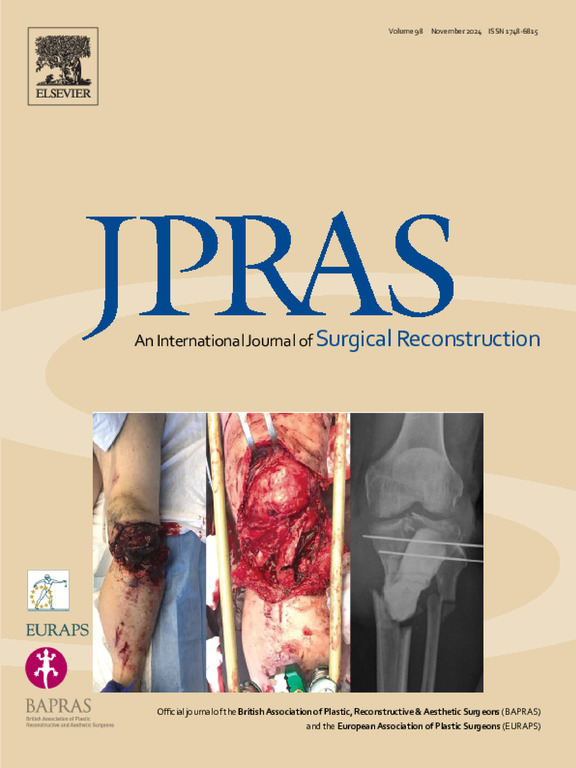Sitting vs. standing: The impact of surgeon posture on patient perception of visit duration in the outpatient plastic surgery clinic
IF 2
3区 医学
Q2 SURGERY
Journal of Plastic Reconstructive and Aesthetic Surgery
Pub Date : 2025-04-07
DOI:10.1016/j.bjps.2025.04.006
引用次数: 0
Abstract
Background
Patients commonly feel a medical professional spends more time with them when the provider is seated during a visit rather than standing. However, no empirical evidence supports this claim in the outpatient setting or specifically in plastic surgery clinics. This study aimed to provide quantitative evidence to support or refute this perception.
Methods
We conducted a prospective, randomized, controlled study at a single surgeon’s outpatient plastic surgery clinic. Patients were randomly assigned to either the sitting or standing group, and the surgeon entered the room and conducted the visit as usual with the assigned posture. Data on the timed and perceived interaction times were collected and analyzed.
Results
A total of 131 patients were enrolled. The mean timed visit duration recorded by the student researcher and the mean perceived visit time reported by patients were significantly longer in the sitting group. However, neither the absolute nor proportional difference between timed and perceived visit durations varied significantly between groups.
Conclusion
These results suggest that patients accurately estimated the duration of their visits regardless of the surgeon’s posture. Therefore, the increased perception of time spent with providers during sitting visits is attributable to an actual longer visit duration rather than an illusion created by the provider’s posture. Thus, sitting offers no substantial benefit in enhancing the perception of a longer interaction. The real time spent with the patient ultimately influences the patient’s experience.
求助全文
约1分钟内获得全文
求助全文
来源期刊
CiteScore
3.10
自引率
11.10%
发文量
578
审稿时长
3.5 months
期刊介绍:
JPRAS An International Journal of Surgical Reconstruction is one of the world''s leading international journals, covering all the reconstructive and aesthetic aspects of plastic surgery.
The journal presents the latest surgical procedures with audit and outcome studies of new and established techniques in plastic surgery including: cleft lip and palate and other heads and neck surgery, hand surgery, lower limb trauma, burns, skin cancer, breast surgery and aesthetic surgery.

 求助内容:
求助内容: 应助结果提醒方式:
应助结果提醒方式:


